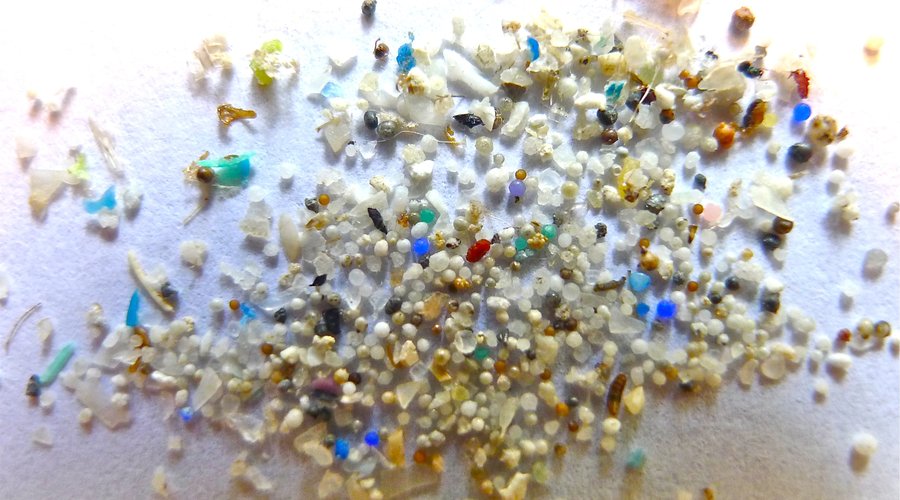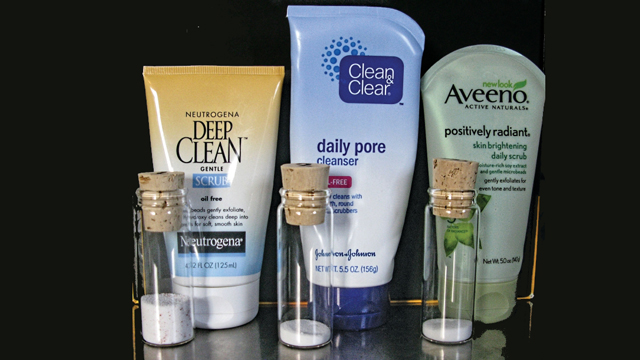Illinois became the first state in the US to ban exfoliating plastic beads. Good for Illinois. Plastic microbeads have been running off by the billions into the oceans, causing huge amounts of environmental damage. Yet most consumers didn’t even realise they existed.
Marine biologists have warned for a while now that dumping tiny pieces of polyethylene plastic down the drain into the ocean will not end well. But since a study by the nonprofit 5 Gyres Institute found rampant pollution in the Great Lakes in 2013, a campaign to ban the beads has been gaining traction in the US (proving once again we care about the issues geographically closest to us.) In addition to Illinois’s ban, New York and California legislatures are considering similar legislation.
So what’s so bad about beads?
Plastic is like a tiny sponge for toxins
The density of plastic pieces in the Great Lakes surprised the researchers. “In fact, I found more in the Great Lakes than in any sample anywhere in the world’s oceans,” Marcus Eriksen, 5 Gyres Institute’s research director told CBC at the time. Downstream of cities, they found nearly 500,000 pieces of plastic in a square kilometre of the lake, which is only unremarkable if you consider there are 330,000 plastic beads in a single bottle on Clean & Clear facial scrub. The beads are also common in toothpastes and body washes.
The microbeads are, as their name promises, small — as small as 0.355mm across in some cases. The fear is that these plastic beads are just the right size for fish and other aquatic creatures to mistake them for food. The beads could physically clog up their stomachs and prevent them from getting adequate nutrition.
Another worry is that plastic is very good at absorbing other toxic pollutants in the water, like PCBs, pesticides and motor oil. Then as smaller creatures are eaten by bigger creatures, the toxins get concentrated up the food chain. A study of lugworms in the Atlantic suggests that toxins from plastic do indeed make it into the bodies of creatures who mistakenly eat them.

Can’t we just filter out the little plastic pieces?
Every so often, a designer will have a bright idea to build a water vacuum to suck up little floating pieces of plastic. Let’s just say these ideas are much easier to render than to implement. A key challenge is that plastic isn’t the only tiny thing in the water. How do you guarantee that you scoop up plastic but not zooplankton, the tiny creatures that are the foundation of aquatic food chains?
The size of these plastic beads also makes them a challenge for sewer treatment plants, which are of course supposed to clean effluent before it’s discharged into the waterways. But many plants filter out solids using gravity, which doesn’t remove the floating plastic beads. It’s much easier to stop dumping plastic down our drains than to remove them from the water system.
But microbeads aren’t the only plastic pieces we have to worry about.
With a name like the Great Pacific garbage patch, you’d expect a great mat of plastic bottles, wrappers, and debris floating around in the ocean. Nope. While ocean currents do indeed concentrate floating plastic in gyres around the world, you wouldn’t be able to see any garbage looking off the side of a boat.
The ocean is a rough place, you see, and any plastic that makes it to the middle of the Pacific has been broken down into little tiny pieces — in the end, not so different from the microbeads we’re worrying about. When it come to plastic ocean pollution, at least, this means that banning microbeads are really only a small step.
But microbeads in soap are especially low-hanging fruit for this type of pollution. Large manufacturers like Unilever, L’Oréal, and Johnson & Johnson have made various voluntary commitments to phase out the plastic beads too.
In retrospect, it’s easy to ask why the hell we ever thought it was a good idea pour little plastic pieces down the drain the first place. In reality, we just never thought about it. [CEN, CBC, Chicago Tribune]
Pictures: 5 Gyres Institute
